The problem: 3mm filament for Reprap printers is expensive!
I
was buying PLA filament from Ultimachine.com for $60.00US for 5 pounds.
Shipping to Florida was $10.50. This comes out to $14.10 per delivered
pound. This is mitigated somewhat because most 3D printed parts are
small and light weight. Add to this that most are printed less than
solid, and this seems OK. Not great, but I could live with it.
Then I was about to reorder, and BAM!
Their web site now quotes the same product at $96.00! This is a
tremendous increase of 62.5%. Filament went to $21.30 per delivered
pound. Grrrr....
The observation:
While printing, if the print head sits idle, the plastic leaks out.
This comes out in nice straight smooth strings, like .5mm filament.
Before I can print again, I have to run the extruder to refill the hot
end. Hmm...
My conclusion: It should be possible to duplicate this process on a larger scale, say 3mm.
This page outlines my preliminary experiments of a 3mm gravity fed extruder.
I
have yet to find a source of PLA pellets, but ABS is readily available.
If you know where I can source PLA pellets, please let me know!
I
bought 10 pounds of black ABS pellets from an ebay seller for $27.00
delivered. This is a much more reasonable $2.70 per pound.
You can click the photos for a much larger view. Firefox opens it sized to the page, click it again to see full sized.
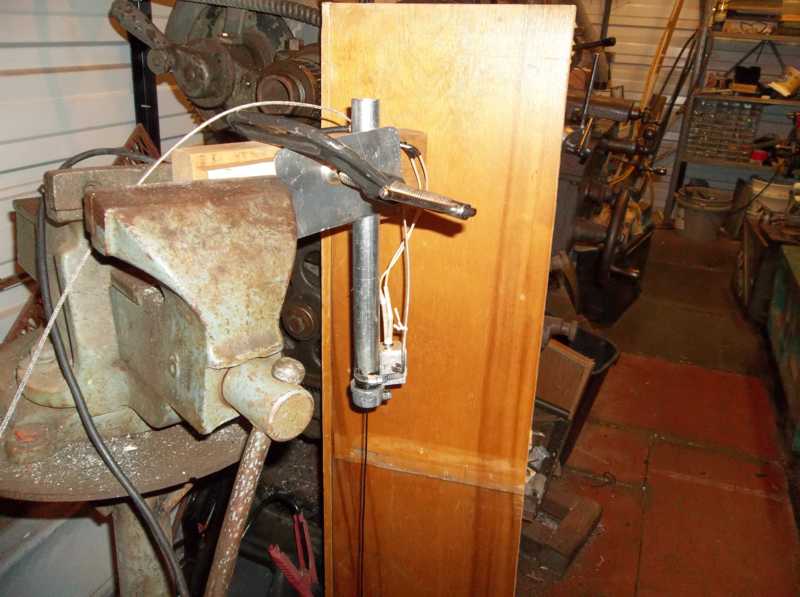
The test setup.
It
consists of a 12" long piece of 3/4" galvanized water pipe with a
standard threaded pipe cap. The cap is drilled in the center with a
.109" hole for the nozzle. Attached to the side is an aluminum block
that holds the cartridge heater and the type K thermocouple.
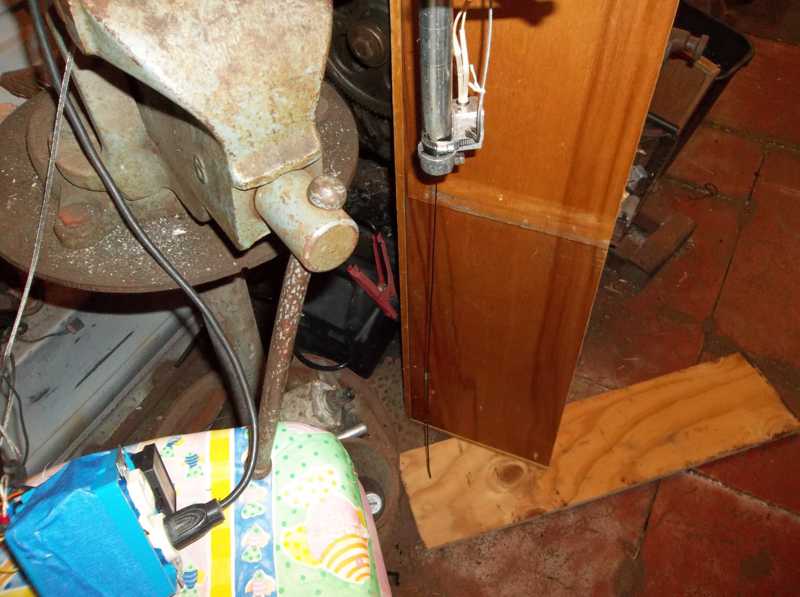
This shows the scrap plywood to keep any ooze from attaching to the steel floor of my shop.
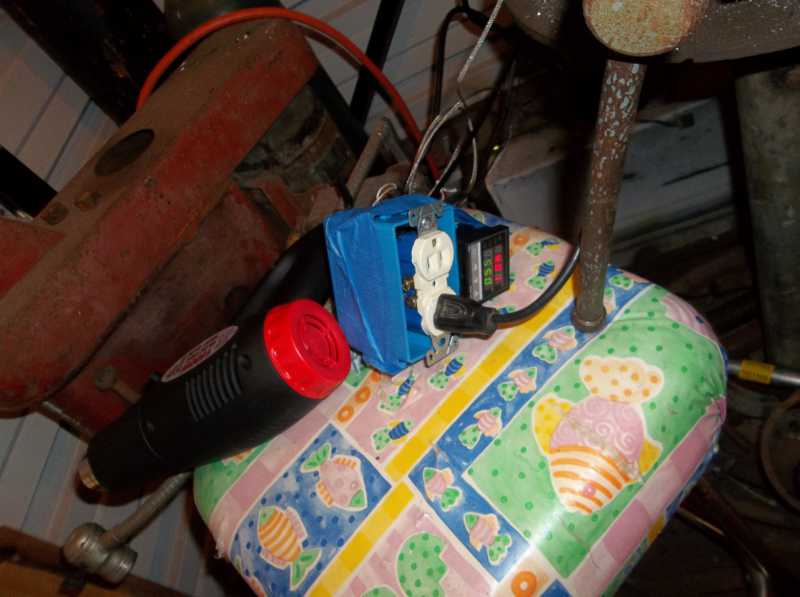 This
is a cheap PID temperature controller from Ebay. I paid less than $20
delivered and it came with the thermocouple. The auction description
stated it was for a max of 400C, but this is wrong. When you program it
for a type K thermocouple, the max goes to 1372C. Another thing
different from the description, it said it could read out in F, but it
won't. For $20, though, I am satisfied with it!
BTW, the green
number is the set point, and the red number is actual temp. When this
was taken, I had ramped the temperature up a little at a time, until
the heater was maxed out. There was a wide difference in the block
temperature and the pipe temperature, due to poor thermal conductivity.
This was evidenced both with a non-contact thermometer and with a piece of ABS placed on the pipe cap as a melt indicator.
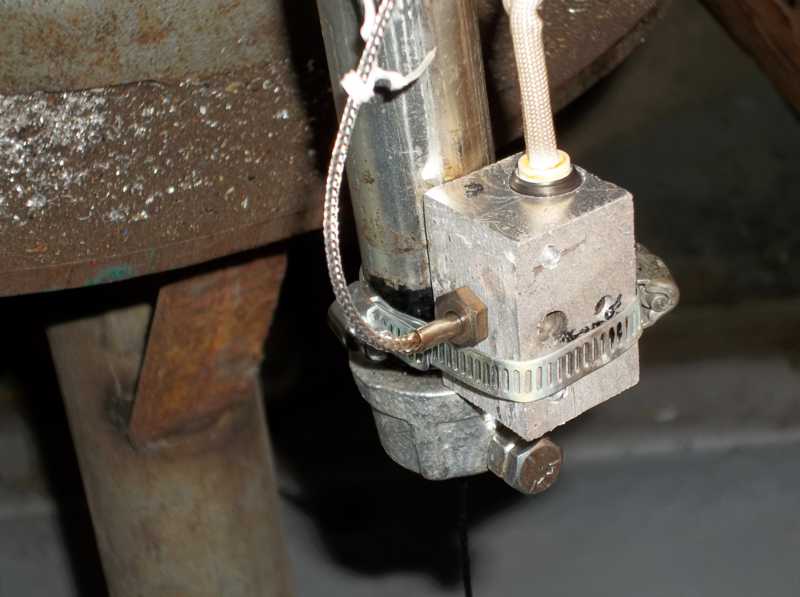 This
is a closer look at the heater block. This was left over from a
previous experiment, I just added the thermocouple hole and strapped it
on with cheap hose clamps. Future efforts will use a formed block for
better heat transfer and maybe some insulation.
The bolt at the
bottom is to plug an unneeded hole from the first attempt to mount the
thermocouple directly to the pipe cap. As it turned out, the
thermocouple requires a blind hole and this hole went all the way
through.
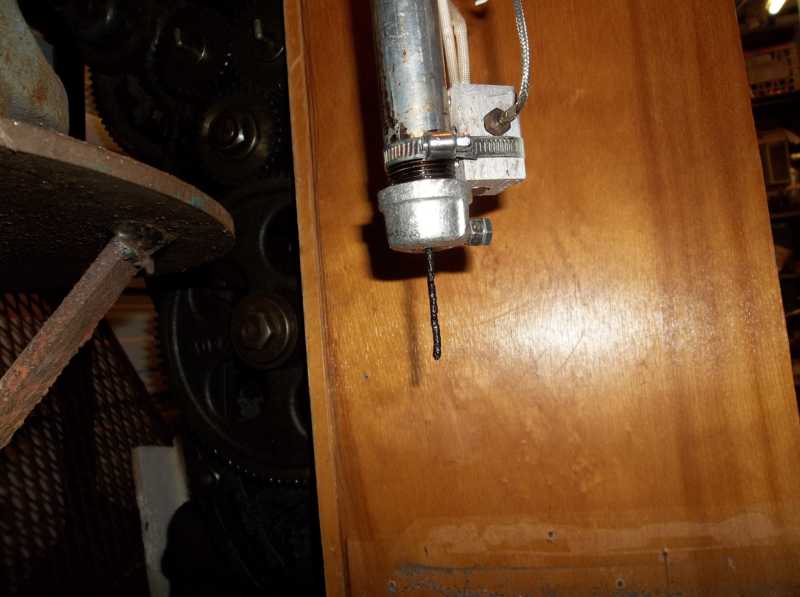 The
ABS "leaked out" as planned. It's rough looking due to a lack of heat.
My cartridge heater wasn't quite up to the task. I had to use a heat
gun to help it along.
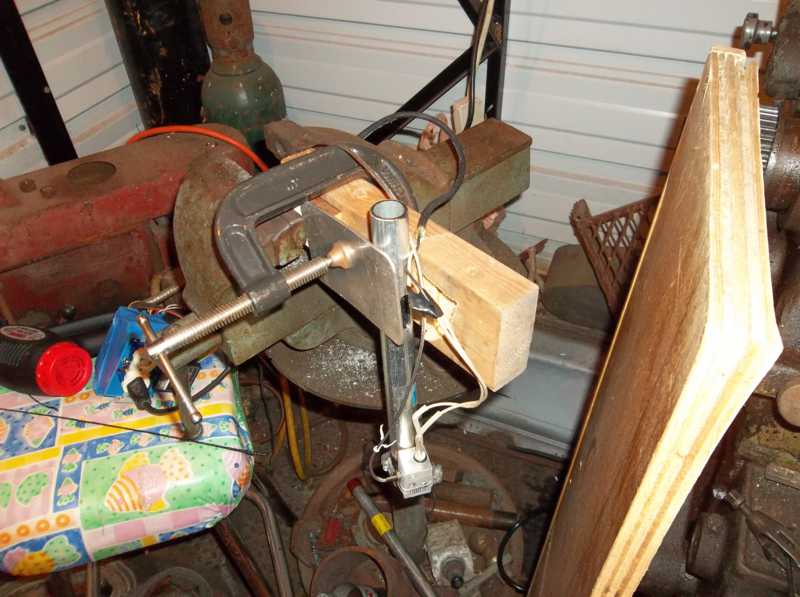 The black line on the stool is the first result of gravity fed extrusion. As a proof of concept, I consider it a success.
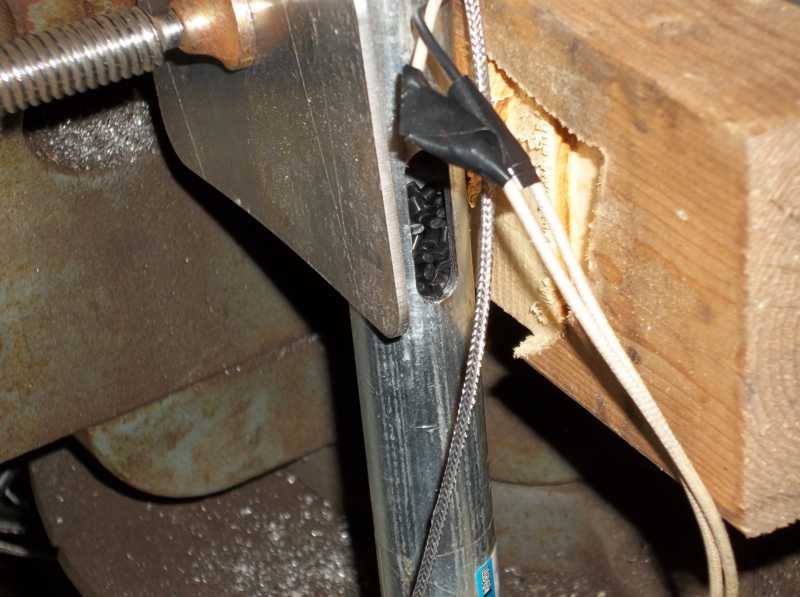 This
is a close up of the slot in the side showing the ABS pellets. The slot
was for something else and unrelated to this experiment.
Conclusion: Success! Gravity feeding of pellets will work.
The next step is to acquire more and larger cartridge heaters. They are on order.
It
remains to be seen if diameter and smoothness can be held to tolerances
suitable for 3d printing. And then there will be obstacles to overcome
in taking up the filament on a spool.
I am hoping this can be
automated to a large extent, but I suspect this will require a method
of regulating the rate of extrusion. This may be asking too much of
gravity feed. |